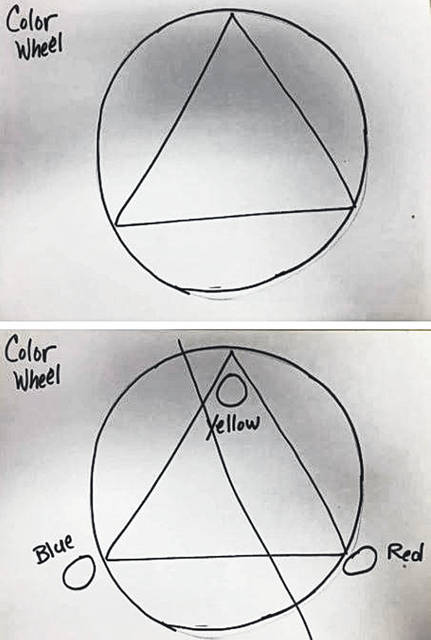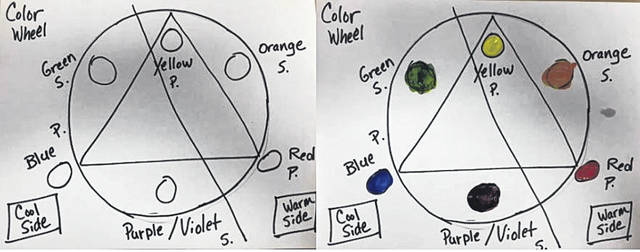

What is color, and where do we get our colors from?
We see colors all around us every day. Without light, we cannot see colors, because the colors are actually wavelengths of light that bounce off an object.
The colored materials we make art with come from our earth — plants and metals are used to make dyes, paints and other creative materials.
How do you mix colors? Well, some colors can’t be made by mixing.
Let’s start with the Primary colors which are red, yellow and blue. We cannot mix colors to make the Primary colors. We get them from our Earth!
Primary colors can then be mixed to make Secondary colors such as green, orange, purple, etc.
Here are two fun YouTube videos that show how Primary colors make Secondary colors:
-“Sesame Street: OK Go – Three Primary Colors,” www.youtube.com/watch?v=yu44JRTIxSQ
-“The Colors Song | Art Songs | Scratch Garden,” www.youtube.com/watch?v=N8yuyekP_So
Materials
-white paper/heavier paint paper
-paintbrush
-water
-cup
-paper towels
-work area
-Tempera or poster paint — Red, Yellow and Blue
-pencil
-optional: magazine page
Steps
Diagram 1
Draw a large circle in the center of the page (freehand draw or try tracing a lid). Diagram 1
Inside the circle, about 3/4 of the way down, draw a line left-to-right horizontally. Use that line as the base of a triangle you draw inside the circle.
Diagram 2
Draw smaller circles at each point of the triangle. Then, label the circles: yellow at the top, red on the right, and blue on the left.
Divide the large circle with a line that leans to the left, following the Yellow and Red labeled spots.
Diagram 3
Draw three more circles (for Secondary colors) between the Primary colors. Now label the circles “orange” between the red and yellow, “green” between yellow and blue, and “violet,” also called “purple,” at the bottom between red and blue.
Draw a square on the bottom-left and label it “cool side.” Draw another square on the bottom-right and label it “warm side.”
Initial each color with a “P” if its Primary or an “S” if its Secondary.
Diagram 4
Paint each of the Primary and Secondary colors in their spots.
Hint: when mixing paint, start with the lightest color then mix in (a little at a time) the darker color(s). So, when mixing orange, start with yellow then add a small amount of red at a time. When mixing green, start with yellow then add a small amount of blue at a time.
Now that you have finished your Color Wheel, you can paint another painting and have fun mixing Primary Colors to make Secondaries!



